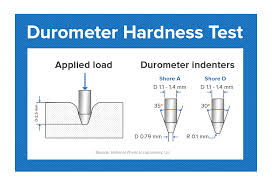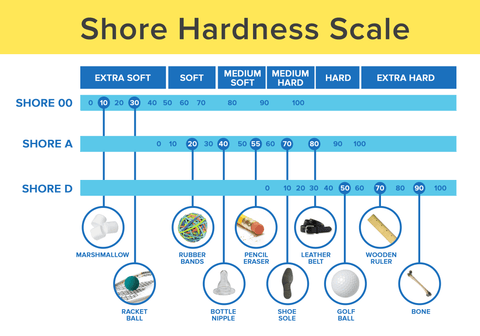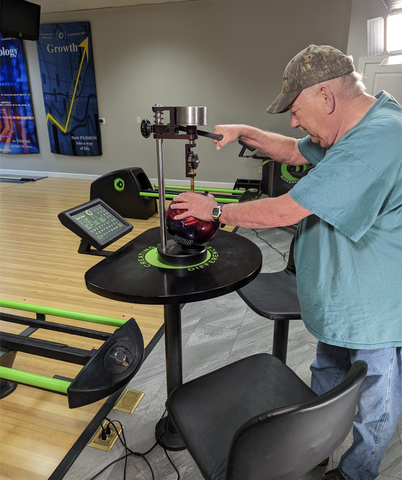With all that is currently going on surrounding bowling ball hardness, Creating the Difference decided to run some tests in an effort to help explain some things about hardness and help the bowling community have a better understanding of this topic. Though not an exhaustive study, we wanted to collect some information and see if we could understand more about this topic. With the help of Mikey Pinel, we sought to answer some of the following questions:
- Does changing the hardness of a ball have a direct impact on both footprint and/or performance?
- Is there a way to tie hardness to performance?
- Why do Pros throw Purple Hammer so much that it is the dominant ball on the PBA Tour?
A big controversy in bowling is centered around the use of a Durometer. Let’s start there with what is a durometer? This picture shows what a durometer looks like and how it is used:
A durometer is a device which is used to indent an object (like a bowling ball) to measure the resistance to indentation. This resistance reflects the hardness of an object. Since objects can be very soft or hard, there are multiple Durometer scales used to determine hardness. In bowling we use the Shore D Scale.
How does it work?
The indenter – in this case, a needle – penetrates the sample and measures how far the indenter travels, up to 0.100 microinches. The Shore D scale used for bowling balls goes from 0 to 100 microinches. There are other Shore scales; however, for bowling balls, Shore D is the best scale because it covers the full range that bowling balls fall within. The Shore D scale indenter has a spring force of 10 lbs. According to the USBC Specifications Manual: “for an approved bowling ball the minimum hardness changed from 72D to 73D on Dec. 31, 2020. Production of models previously approved below 73D must cease after July 31, 2022. The average surface hardness from 10 readings around the bowling ball shall not be less than 73 durometer D when measured in compliance with ASTM D2240-15 at 70-77 degrees Fahrenheit. NOTE: Minimum hardness”
To put this in perspective here are some examples of common materials and where they fall on and various Shore Scales:


For our testing, we brought in David, who is an expert on checking bowling ball hardness. We discussed what we were going to check and test. Using the Standard Operating Procedure from USBC, we checked the hardness of each of our bowling balls, the results of the averaged data are in the figure…
Click Here to Read the Full Original Article at Creating the Difference – Bowling…
